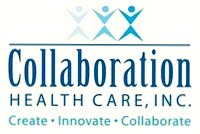
The Kaiser Family Foundation puts together some interesting work that can help keep a perspective of the reality of what is going on in this industry. The politics, the complexity, and the individual self-interests have made this all very confusing to the average citizen. Over the past 10 months they’ve been given a lesson in Health Care 101 whether they wanted to take the class or not.
Here’s Where We Stand Today:
Kaiser’s January Health Tracking Poll finds 54% of the American public feeling that addressing health care reform remains an important part of addressing the broader needs of our economy. The message is very clear that something needs to be done to correct the trajectory we are on today. On the other hand, 39% feel we need to address other things first. Everyone is concerned with the impact anything we do will have on the deficit. Overall we’re concerned about the up-front costs that will be required to make it work and we don’t have a clue of what the real costs will be.
While the need exists, there is no strong support for any of the current proposals being considered by Congress. Getting to where we are today has been ugly. I wouldn’t imagine there is any great sense of trust in the final product that has been produced as a result of this process. Interestingly, 42% of the public supports the current proposals being considered and 41% oppose them. But, it’s the intensity of the support or opposition that makes it interesting. Those that oppose it really oppose it, and those that support only “somewhat” support it. The strength of the support is still at risk and vulnerable to individual issues.
Most (42%) still feel the country will be better-off by pursuing the current alternatives but patience is wearing thin. A growing number (37%) feels our country will be worse off if we continue down this path. If the pattern continues it won’t be long before the percentage of people feeling our country will be worse off will pass the others. That will make for some interesting political discussions.
When you consider that between the House and Senate Bills you are dealing with over 3,000 pages of legal jargon it is no wonder that the average citizen does not have a good idea of what is included in the legislation. I wonder of our Congress really knows what is included in the 3,000 pages (sorry, that’s another post). While the public wants to be educated, it is still very vulnerable to the talking points of particular points of view and the public (fortunately or unfortunately) hears and somtimes believes those who yell the loudest.
The Kaiser study found that the most widely recognized provisions (those identified as included as a component of the legislation) were those that were “touted by both supporters and by opponents”. We have a signficant education opportunity as we move the public to Health Care 202 (the next level). Let’s just hope we don’t make it as ugly as Health Care 101.
It’s an interesting study and well worth the time spent reviewing it. After the elections in Massuchsetts last week we’re all still wondering the direction health care reform will take. But at least as of today the public still knows we need it, they just don’t necessarily like the proposals that are out there today. Hopefully, we’ll now take the time to regroup and listen to them a little more closely as we move forward.





